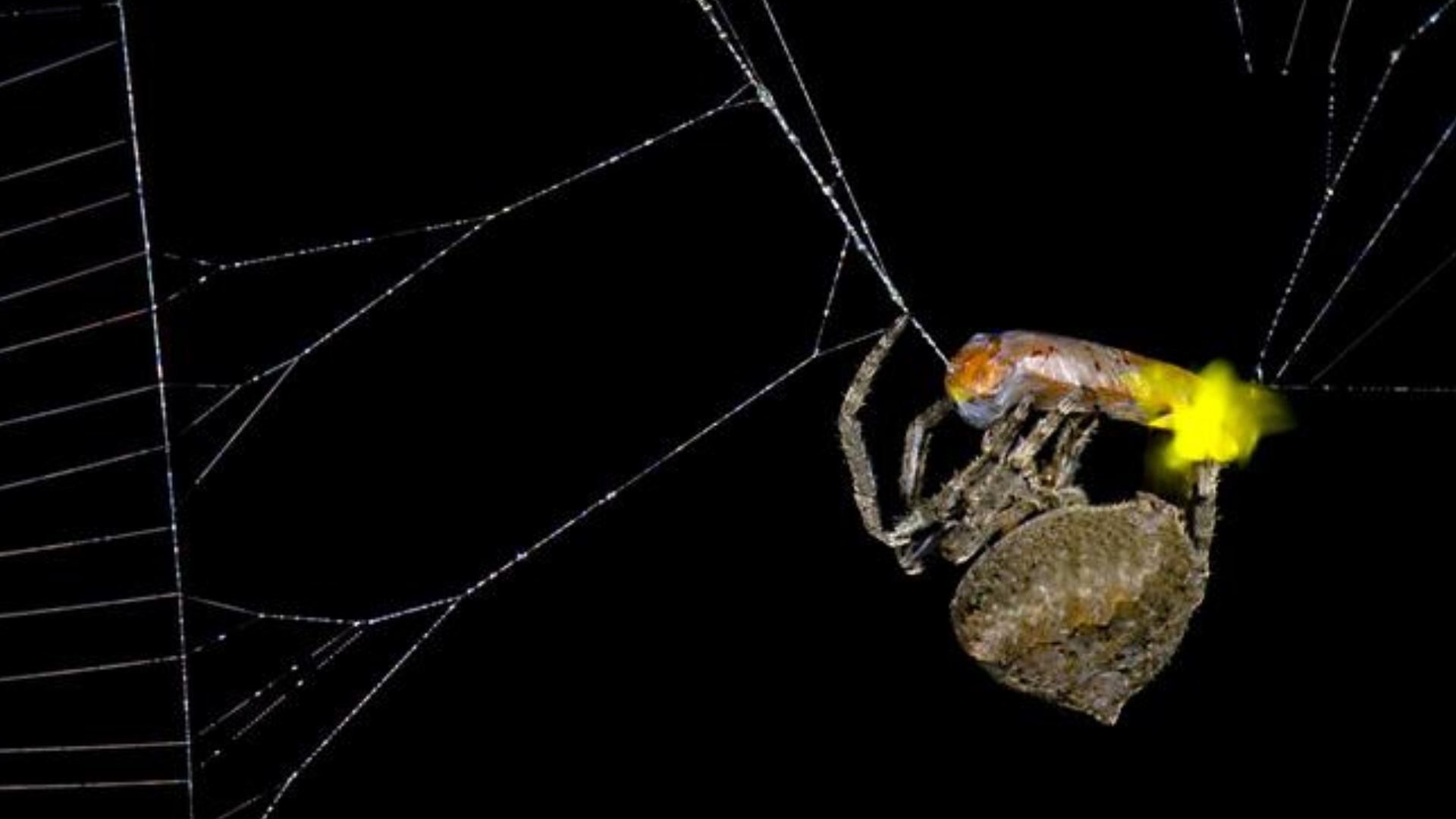Researchers in China have discovered that a species of orb-web spider, Araneus ventricosuscan manipulate the flashing signals of the male fireflies caught in his net so that they correspond to the typical signals of female fireflies and thus lure more males into his trap.
The study, led by Xinhua Fu of Huazhong Agricultural University in China, sheds light on how A. ventricosa uses the bioluminescent communication system of the firefly species Abscondita terminalis.
Masculine A. terminalis Fireflies normally emit multiple pulses using two lanterns on their abdomen to attract females, which respond with single pulses from their single lantern. However, researchers found that male fireflies trapped in the spider’s web changed their blinking behavior to mimic the females’ single pulse signals.
“Based on extensive field observations, we suggest that Araneus ventricosus practices deceptive interspecific communication by first capturing male fireflies in its web and then causing the captured male fireflies to emit bioluminescent signals that differ from those normally emitted by A. terminalis males and instead mimic the signals that normally come from females and attract males,” the researchers wrote in the study, which was published this week in the journal Current Biology“The result is that the trapped male fireflies send out false signals that attract more male fireflies into the net.”
Observing mimicry in the wild
Fu first noticed the phenomenon during field observations, where he saw numerous male fireflies trapped in spider webs, but rarely female ones. This unusual pattern led him to suspect that the spiders could manipulate the fireflies’ blinking behavior.
To investigate this, Fu and behavioral ecologists Daiqin Li and Shichang Zhang of Hubei University conducted field experiments that confirmed the hypothesis. Their experiments showed that the presence of the spiders increased the probability of catching male fireflies compared to when the web was unoccupied.
Further analysis showed that the signals emitted by male fireflies in the spider webs were very similar to those emitted by free females, using single pulses from a single lantern. The results suggest that the spiders are modifying the fireflies’ signals, rather than the males emitting a distress signal.
“While the eyes of orb-web spiders typically have limited spatial acuity, they rely on temporal rather than spatial acuity to discriminate flash signals,” Li said in a press release. The study suggests that this manipulation may be an example of a broader but under-researched use of mimicry by predators in nature.
The researchers want to further investigate whether the spider’s venom or bite has a direct influence on the changes in the fireflies’ flashing pattern.
ABOUT THE PUBLISHER
Johannes Loeffler John is a writer and programmer based in New York City. He writes about computers, gadgets, gaming, VR/AR, and related consumer technologies. You can find him on Twitter at @thisdotjohn

